Curious about the Schuylkill Center’s LandLab Artist-in-Residence program?
Join Tina Ploakrz, Director for Environmental Art virtually and ask all of your questions! We’ll tell you more about the residency, its goals and the application process.
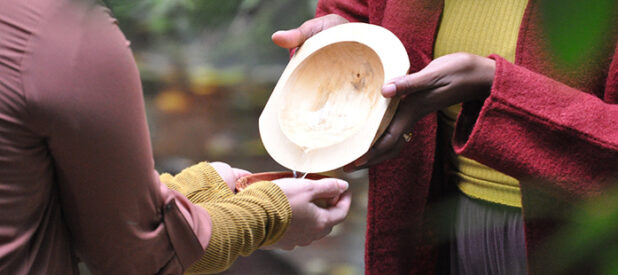
Curious about the Schuylkill Center’s LandLab Artist-in-Residence program?
Join Tina Ploakrz, Director for Environmental Art virtually and ask all of your questions! We’ll tell you more about the residency, its goals and the application process.

Curious about the Schuylkill Center’s LandLab Artist-in-Residence program?
Join Tina Plokarz, Director of Environmental Art virtually and ask all of your questions! We’ll tell you more about the residency, its goals and the application process.
LandLab Dream Journal
Guest post by LandLab Artist Kate Farquhar
Editor’s Note: LandLab is the Schuylkill Center’s environmental art residency program. Kate Farquhar was named a resident artist in 2017 and recently wrapped up her project, titled Synestates. She installed a series of three sculptures on the Schuylkill Center’s trails – come visit us to see them. This blog post is Kate’s reflection on time at the Schuylkill Center and a peek into her creative process.
I’m currently wrapping up my LandLab residency at the Schuylkill Center: a chapter in my relationship to a place that I will always treasure. Ten years ago I visited the Schuylkill Center when I was deciding whether or not to move to Philadelphia. Six years ago I helped with the Schuylkill Center master planning design effort led by Salt Design Studio. I’m excited to begin my next chapter and explore the woods, meadows, water bodies and trails with fresh eyes. Looking for … medicinal plants, bird calls, old friends? Time will tell.
Reflecting on my LandLab residency, there remains a small corner that I’d like to share with you. To guide my work throughout the residency, I’ve filled a watercolor journal with notes and ideas. In my pursuit of habitat, infrastructure and myth, most of the mythical connections seem to live in those pages. The sculptures I built include vine trellis sculptures by the Pine Grove, floating forms in Wind Dance Pond, and pollinator habitat at the River Connector trail. While I built in solitude, I often imagined fictional rituals that could connect people to the sculptures, accessories to environmental play and novel ways to spend the day at the Schuylkill Center. Take a peek at a few pages recording the associations and fantasies that came to me throughout the process, and persist in the dream-lives of these sculptures.
About LandLab
LandLab is a unique artist residency program that operates on multiple platforms: artistic creation, ecological restoration and education. A joint project of the Schuylkill Center for Environmental Education and the Center for Emerging Visual Artists (CFEVA), LandLab offers resources and space on our 340-acre wooded property for visual artists to engage audiences in the processes of ecological stewardship through scientific investigation and artistic creation.
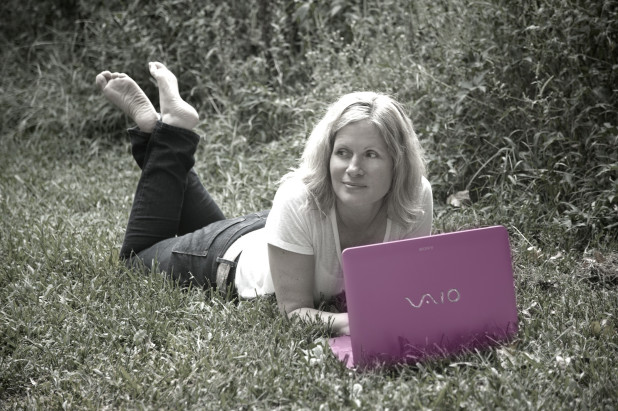
Guest contributor Leslie Birch, 2014-2015 LandLab Resident Artist
A few years ago I sat at my computer reading the latest on the demise of the glaciers in the Arctic. I was angry with the polluting corporations, fed up with the greed of the oil industry, disgusted by people’s consumption, and alienated by a government ruled by lobbyists. I felt frozen, as if calamity had already happened; some days I was even bleak about the future. My home thermostat was set to 69, two of my computers were on, I was surrounded by electronic parts for a project and I was getting ready to drive to Whole Foods in a Honda Element wearing a puffy NorthFace jacket picturing a tall Chai Latte. Feel free to laugh, as I’m certainly laughing now as I write this. How long did it take me to figure out that I was the problem?
Luckily for me a a few years ago I also discovered the Schuylkill Center’s LandLab program and started an investigation of a gully that had formed from stormwater runoff on the southeastern side of the Center’s property near Port Royal Ave. This water finds its way down to Wind Dance Pond, where it eventually overflows into the stream. With the help of Stroud Water Research Center I was able to develop a monitoring system to measure the changing depths of the stream. While this was an interesting project, what is pertinent is the fact that I was forced to face climate change head on. Philly is getting hotter and wetter, and while the Center can’t stop mother nature’s waters it can encourage artists like me to communicate the problem and get involved.
After the project was over, the Center asked me to collaborate on two other art/education projects dealing with water issues, thanks to a grant from CUSP (Climate & Urban Systems Partnership). CUSP is working on preparing Philadelphia for the future issues brought by climate change and they work locally getting neighborhoods on board using friendly techniques. I decided to join their efforts and have become part of a team of organizations and individuals starting conversations, offering education and demonstrating mitigation techniques.Thanks to their workshops I’ve learned how to discuss this topic without scaring people, have discovered what other partner cities are doing to face the same issues and have attended lectures by experts in the field. I should mention that I don’t have a science background, but I do consider myself a citizen scientist. CUSP’s strength is its ability to bring all types of people together, and later in the year I worked with another member artist to create the first climate change art festival under their umbrella in Fishtown. It was exciting to create my own art on the topic of corn and weather, and fascinating to see how people expressed their climate concerns using mixed media, including spoken word and music. The Schuylkill Center’s fall 2016 exhibition on climate change was part of the same grant and has brought together even more artists and enabled more people to join the conversation.
As you can see, what started as a small project has snowballed, and I find myself looking for other ways to combine my interests to work on the problems of climate change. One of my strengths is working with electronics, so I recently joined Public Lab, a grassroots movement using DIY techniques to address environmental concerns. I attended their LeafFest gathering, which was a weekend camping trip where members demonstrated their latest environmental work including solar balloons, an Arduino modem style device and a trail cam. I learned about a project they are developing which uses a houseplant and aquarium pump to help reduce toxins in the air. They sent me home with those materials and soon I’ll be creating a tutorial for the project that can be shared around the world. It’s all part of the mission to offer open source methods to monitor and mitigate environmental issues.
So, having come from a state of being frozen like a glacier, I too am melting. There are many small changes that can help this planet,and I’m starting to make them part of my life. Nowadays I’m walking to the grocery store with my husband. It’s great exercise, less stressful and certainly kinder to the environment. I recently learned just how important it is to give feedback to our government officials about environmental matters. So, I’ve returned to my old ways of calling legislators and writing emails. Now I’m learning how to combine art and activism through free webinars from The Center for Artistic Activism. Someday I hope to engage other groups and artists in work that goes beyond education and actually encourages others to make changes.
My story isn’t “yea, me” because there is probably a lot more I can do to serve this world. However, it is a huge thank you to the Schuylkill Center for helping me to realize that by working on one small problem I would gather the courage to do more. There is a reason for the Center’s commitment to the arts and it goes beyond appreciation for beauty; it’s another strategy for voice and change. We all have the ability to do more, whether it be to add water-loving plants to our yard, to make a roof reflective, to buy our food locally or to just have a conversation about the environment with our neighbor. Doing one small thing makes all the difference. What kind of strategy or skill can you offer to help Philadelphia prepare for the changes that are already beginning?
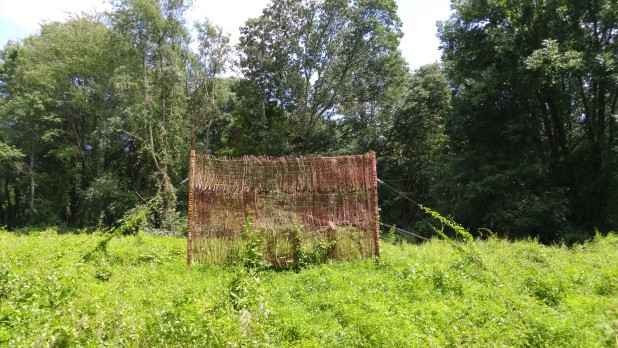
By Catalina Lassen, Art + PR Intern
As spring bounds in again, another year has come and gone, and almost a year has passed since our LandLab artists in residence installed a variety of exciting environmentally minded artworks last April. This cycle of a year signifies not only an anniversary, but is also a reminder of the changes that have occurred during the time in-between. As far as the art of LandLab goes, the works have been activated by nature, shifting as the seasons do. Back in November we took a look at the progress of one of these installations, but it’s now time to turn our attention to Interwoven, a project created by artist-botanist duo WE THE WEEDS. Woven from invasive vines, this installation is an exploration of invasive plants, examining the history, perception, and impact of such species on local environments, while working to remove and recycle this flora. As the year has passed, there has been exciting movement among Interwoven, as the natural cycles of the earth activate the framework of this large sculptural work.
(Before Photographs): If you’re interested in more discussion of this project, or of the ecological and cultural roles of native and non-native plants, please join us on April 14th for a Botanical Cocktail Hour with artist Zya S. Levy.
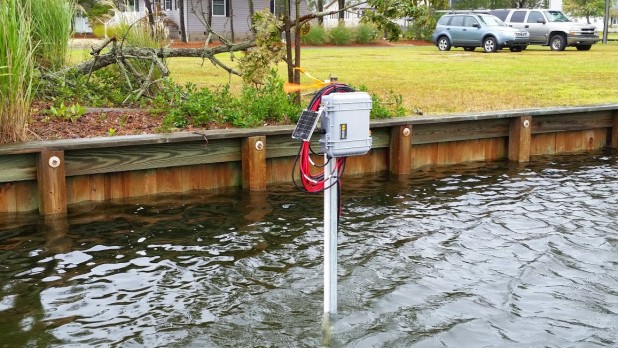
By Leslie Birch, 2014-2015 LandLab Resident Artist
My LandLab project started with the idea of examining water quality and morphed into understanding and mitigating stormwater run-off, the primary water quality concern facing the Schuylkill Center’s streams. It’s been interesting to see the changes along the way, much like a meandering stream. There’s been discovery in understanding how storms are affecting the land at the Center, brainstorming around ideas to deter the run-off, and definitely a period of inventing. Last we left off, I had been in discussion with Steve at Stroud Water Research Center about the sensors for my stream monitor. I learned that Steve was going to pay a visit to a canal community in Delaware for a monitor installation, and knowing it would involve boats, I was all in!
This community was going to experiment with oyster colonies to reduce the amount of algae in the water. As you can imagine, algae can build up and make it difficult for boats, so they were looking for a solution. They would need to test the water before and during the experiment in order to see if the oysters were successful. So, monitoring devices that could detect oxygen levels would be just the thing. Of course, the monitors would have to be installed in canals which were filled with saltwater–unlike the freshwater at our Center. It was interesting to see how the monitors were placed using a pole driver, which caused a bit of clanging. One family was particularly curious about the project, so I actually went ashore to explain it to them. They were so amazed and happy to hear about this possible sustainable solution for their community. All was going well with the monitors until we started testing. We got a negative read on conductivity–what??. Apparently the briny water caused a different affect on the sensor and had to be accounted for in the programming. It was a great lesson in coding, and Steve was able to tweak it to get the correct reading.
Back home, it was time to make some decisions on parts for my monitor. Steve knew I needed a water depth sensor to measure the amount of stormwater coming in, as well as something to do temperature and conductivity. For water depth, a specific ultrasonic sensor did well upon testing at Stroud, so Steve was excited about using it. Also, a new combination sensor for temperature and conductivity had come to market, and based on past sensors from the company, there was a sense that it would work well for my application. So, surrounded by some fun parts, I got started soldering.
I started with the main boards that would be used for the monitoring device. Since one little mistake in solder can cause a short circuit, I had Steve inspect each connection. Two opinions are better than one–especially late at night! Later I worked on soldering the parts for the XBee communication, which would allow the monitor to talk to another unit which would transmit the data to the internet. Besides soldering, there were also the project boxes that needed holes to be drilled. The drill will always be my favorite tool on the workbench :). It was a happy moment to be finished the assembly, but it was short lived when I moved onto testing. The ultrasonic sensor was definitely getting a reading, but the information was not transmitting properly. The data is supposed to get stored on an SD card on the unit and also transmitted to a website where it is formatted into a table. After double checking the hardware, Steve figured out that there was an issue with the Arduino code that had been uploaded. So, by tweaking one line, it was quickly repaired and we were back to testing. It’s so darn exciting when things work!
Video: https://youtu.be/1lkr7QeqoEU
While Steve and I awaited a good-weather installation date for the monitor, I got together with Brenna to continue work on the larger Storm Snakes made of burlap. I remembered that the proportions had looked off on our small version, so I googled the dimensions of one of the largest snakes in the world for the new version. It seemed like each snake worked well with five coffee bean bags for length. Then, it was just a matter of trimming off the sides to create a skinnier snake. After I was finished stitching, I worked on stuffing the long casings of burlap with the mixture of coir, wood chips and stones. It took so long to shovel the materials into those casings, so my husband helped design a funnel out of a plastic plant pot to make the job easier. I successfully filled three large snakes, and they were looking quite plump. For decoration, you may recall I was interested in having plant material growing on the outside of the snakes. Well, I learned about moss graffiti and talked to a moss supplier in the Poconos, Moss Acres, to be sure this would be viable. A few days later I received a box of moss and after getting some large containers of yogurt, I was ready to roll.
On the day of installation, it took a team of us on a utility vehicle to place each of the three snakes–they were heavy! Christina Catanese (the Schuylkill Center’s Director of Environmental Art) had surveyed the team at the Center to determine the areas of the path that were most in need of stormwater protection. One ended up in the meadow to deal with parking lot run-off, another was located on a steep curve of a popular path where water often gathered and the final was placed on a path near Wind Dance Pond to slow down the water coming off Port Royal Ave– the inspiration point for the entire project. The next step was decorating the snakes. I mixed a moss yogurt slurry and attempted to paint it. It was tricky to apply, and in the end, I gave up on a brush and just used my bare fingers. It was fun creating the patterns, and I found that simple shapes worked best, as the mixture would easily crumble with intricate lines. The families passing by on the trail found them quite interesting.
As for the monitor installation, Steve and I finally found a good day to get it situated. I helped to hold parts as Steve hammered a mounting pole in the stream bottom. Now that things are in place, it is time for my favorite part–gathering data. So far the stream monitor seems to be collecting data fine. In its first week or so, it transmitted to the spreadsheet sporadically. This was due to the fact that the receiving station is set up in a metal building, and having problems getting a signal. Steve is currently testing different antennas that might be more suitable for this location. For now, we fetch the SD card and periodically upload, so there is some historical data currently on Stroud’s site to view, if you click on the table. Right now it is not transmitting at all, so Steve is also checking the code as it might have something to do with the way the system resets. No matter what, the data is still going to the SD card, so we will definitely have it.
One of the interesting things I’ve already learned from the data is that the conductivity is almost identical to a stream behind Stroud. I would have thought that our stream would have been more polluted as it stands near the bottom of the chain of watersheds leading to the Delaware River. Also, I thought that when a storm would come that there would be a big change in depth for quite a while, but apparently with urban streams, storm water comes in rapidly, but also dissipates quickly. So, you really have to look at each day’s numbers in order to view a difference. My hope is that these figures will be used as evidence of stormwater run-off so that future funding can be obtained to really mitigate the water coming off Port Royal Ave.
It has certainly b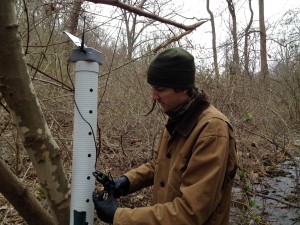 een an interesting adventure and I’ve learned so much about stormwater run-off. I’ve also had an opportunity to get more involved with science, and use my electronic skills for sustainability. I don’t think I could have found a better match for my interests, and I’m so thankful that our Center makes environmental art a priority. Getting to meet other like-minded artists has also given me hope that there is still the possibility of change in this world. It’s not going to be from corporations or governments, it’s going to have to come from people like you and me. My next step will be to create a tutorial that will be posted on Stroud’s website for creating the storm monitor. Thanks to open source solutions and the web, we can all share information and build our own solutions for environmental problems. This all ties into the idea of being a citizen scientist, which organizations like Public Lab and NASA are embracing. So, don’t be scared to be the scientist or the innovator. At the end of the day it isn’t necessarily who has the degree, it’s who is doing the work. There’s a place for all of us here on this planet, so be bold.
een an interesting adventure and I’ve learned so much about stormwater run-off. I’ve also had an opportunity to get more involved with science, and use my electronic skills for sustainability. I don’t think I could have found a better match for my interests, and I’m so thankful that our Center makes environmental art a priority. Getting to meet other like-minded artists has also given me hope that there is still the possibility of change in this world. It’s not going to be from corporations or governments, it’s going to have to come from people like you and me. My next step will be to create a tutorial that will be posted on Stroud’s website for creating the storm monitor. Thanks to open source solutions and the web, we can all share information and build our own solutions for environmental problems. This all ties into the idea of being a citizen scientist, which organizations like Public Lab and NASA are embracing. So, don’t be scared to be the scientist or the innovator. At the end of the day it isn’t necessarily who has the degree, it’s who is doing the work. There’s a place for all of us here on this planet, so be bold.
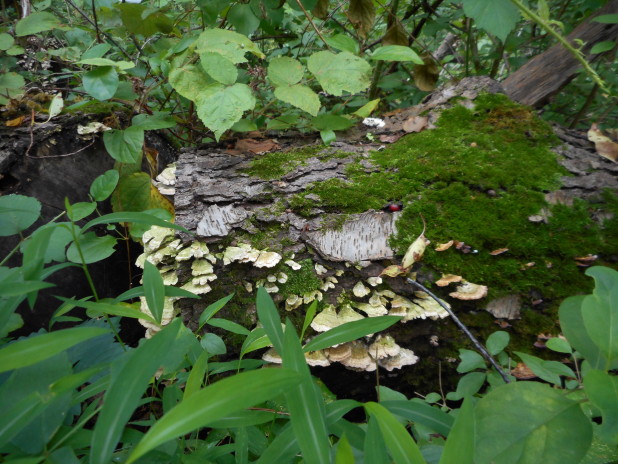
By LandLab Resident Artist Jake Beckman
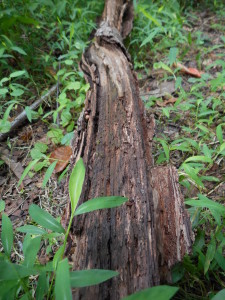 Spring is just around the corner and with its arrival comes the fragrant, earthy smells of thawing soil. As my residency investigating the myriad aspects of soil formation at the Schuylkill Center enters its final phases, I ‘m finding myself reflecting on the terranean dramas that will begin unfolding in earnest as the temperatures rise.
Spring is just around the corner and with its arrival comes the fragrant, earthy smells of thawing soil. As my residency investigating the myriad aspects of soil formation at the Schuylkill Center enters its final phases, I ‘m finding myself reflecting on the terranean dramas that will begin unfolding in earnest as the temperatures rise.
The rock cliffs on the southern border of the property will shed their icy tentacles, exposing to sun and rain new fissures pried apart during the winter months. After a long winter of freezing and thawing, boulders will have transitioned one tiny step closer to becoming rocks, rocks to becoming pebbles, pebbles to sand, and so on as the mechanical and chemical processes of weathering slowly and gradually make the minerals of solid rock accessible to plant and animal alike. The mechanical weathering of the relatively soft mica schist so prevalent in the area will be particularly in evidence as its glittery particles catch the light in the rivulets of spring snowmelt.
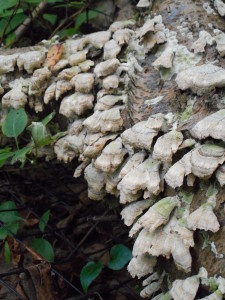 Likewise, spring is a time for the beginning of a much different drama- one that involves the long-awaited fruiting of vast underground networks of fungal organisms. These decomposers have been hard at work throughout the year digesting all manner of otherwise hard-to-digest soil components (cellulose, lignin, even rock!). In one of nature’s amazing instances of cooperation, the fungi and nearby plant roots exchange their metabolic by-products in specialized structures call mycorrhizae. This exchange provides fungi with sugars they need to continue growing and enter the next phase of their life-cycle: fruiting. If we’re observant and in the right place at the right time, we can often witness this step in the cycle through the emergence of mushrooms, toadstools, bracket fungi, and the like. Spring is the beginning of this phase for these organisms and is such an exciting time to bear witness to life re-emerging into view!
Likewise, spring is a time for the beginning of a much different drama- one that involves the long-awaited fruiting of vast underground networks of fungal organisms. These decomposers have been hard at work throughout the year digesting all manner of otherwise hard-to-digest soil components (cellulose, lignin, even rock!). In one of nature’s amazing instances of cooperation, the fungi and nearby plant roots exchange their metabolic by-products in specialized structures call mycorrhizae. This exchange provides fungi with sugars they need to continue growing and enter the next phase of their life-cycle: fruiting. If we’re observant and in the right place at the right time, we can often witness this step in the cycle through the emergence of mushrooms, toadstools, bracket fungi, and the like. Spring is the beginning of this phase for these organisms and is such an exciting time to bear witness to life re-emerging into view!
If you’ve never given much thought to soil (or even if you have and love all of its complexity!), please join us at the Schuylkill Center for a fun evening of soil related speakers, vendors, wine and dessert. I’ll be speaking more about my residency project and the various sources of inspiration (artistic and otherwise) that have influenced my process. Others speakers will flesh out the science of soil, fungal interaction and the role soil plays in food production. It would be great to see you there. In the meantime, go give a big welcome to spring and hug some dirt!
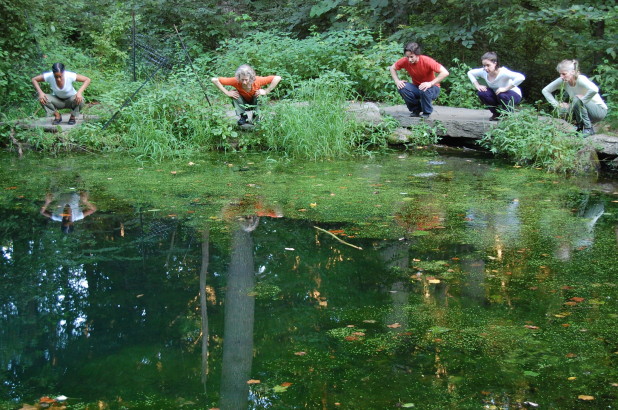
By Christina Catanese, Director of Environmental Art
In 2000, Mary Salvante had an idea that the Schuylkill Center could be the perfect place to showcase environmental art. Nearly 15 years later, I’ve been reflecting on the past decade-and-a-half of environmental art at the Schuylkill Center: 20 outdoor exhibitions, 11 artist residencies, and dozens of shows in our gallery. Over the years, artists have grappled with issues and wonders in our ecosystem and shared their responses in diverse media. This post shows just a smattering of highlights of the art program going back to our very first gallery show and first artist-in-residence.
This January, we are kicking off the Schuylkill Center’s 50th anniversary celebration and celebrating fifteen years of environmental art at the Schuylkill Center with our fourth Annual Richard L. James Lecture by artist Mary Mattingly. Along with an interdisciplinary panel, Mattingly will reflect on the role of environmental art in a changing environment. With ecological challenges growing in complexity and scope, 2015 presents the perfect opportunity to consider the relationship of art and environment, and what it might look like in the next 15 years, 50 years, and beyond.
LandLab Residency (2014-2015), Artists: Jake Beckman; Leslie Birch; WE THE WEEDS (a collaboration of artist Kaitlin Pomerantz and botanist Zya Levy); Marguerita Hagan, B.H. Mills, and Maggie Mills
LandLab is a unique artist residency program that integrates art, ecological restoration, and education. A joint project of the Schuylkill Center and the Center for Emerging Visual Artists (CFEVA), LandLab residencies will make innovative installations that prevent or remediate environmental damage while raising public awareness about ecology. LandLab artist Jake Beckman created this mind-map to depict his early conceptualizing of his work on the cycles of soil formation and decay in the forest. Continue reading
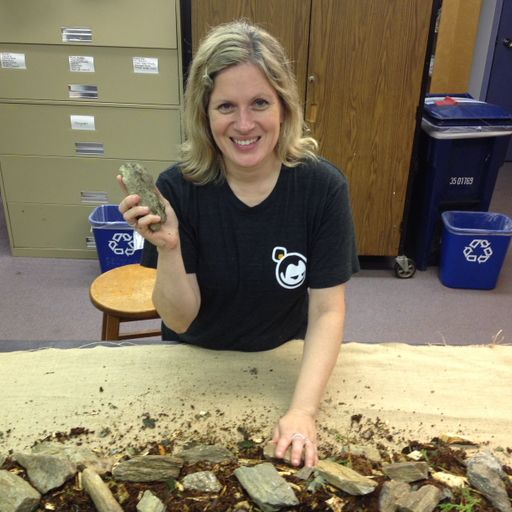
By LandLab Resident Artist Leslie Birch
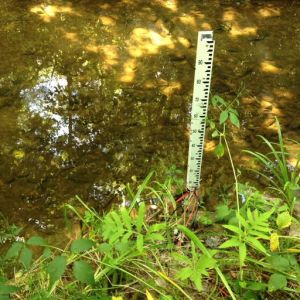 Right now I’ve been experiencing some interesting emotional connection to my LandLab project. This may seem odd, as my project is probably the most tech oriented of the bunch! I can only describe it as this feeling of letting go of attached ideas and really just observing and listening, both to nature and the people that know it well. That is different for me, because most of the time my projects are conceived ahead of time so they can be “pitched” to the people that may green-light them. The process for LandLab is very different because the Schuylkill Center is trusting from past work that I have the ability to produce something interesting. They are looking for ideas, but they are not holding you to them. In fact if anything, they are excited by process and evolution, and the show in the gallery really speaks to that idea. The staff at the Center has been really great in encouraging my work, and allowing it to unfold. It is no different from allowing seasons to change, and I’m really experiencing that in my whole body. That’s it for the fuzzy stuff — let’s get back to the science!
Right now I’ve been experiencing some interesting emotional connection to my LandLab project. This may seem odd, as my project is probably the most tech oriented of the bunch! I can only describe it as this feeling of letting go of attached ideas and really just observing and listening, both to nature and the people that know it well. That is different for me, because most of the time my projects are conceived ahead of time so they can be “pitched” to the people that may green-light them. The process for LandLab is very different because the Schuylkill Center is trusting from past work that I have the ability to produce something interesting. They are looking for ideas, but they are not holding you to them. In fact if anything, they are excited by process and evolution, and the show in the gallery really speaks to that idea. The staff at the Center has been really great in encouraging my work, and allowing it to unfold. It is no different from allowing seasons to change, and I’m really experiencing that in my whole body. That’s it for the fuzzy stuff — let’s get back to the science!
You may remember that I wanted to get a glimpse of Port Royale Ave. and the Center’s property in the rain. It has been difficult to do this because this fall the rain storms have been coming at night, which would not be the best time for video. However, there was a morning when it was raining, and I rushed out of the house to record. Check out the video.
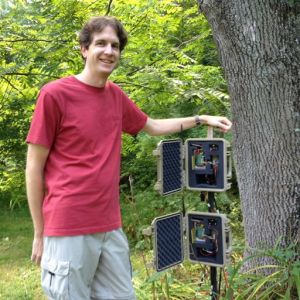 Although this was not a heavy storm, at least I saw the puddling on Port Royal Ave., and I can imagine in a larger storm what the situation might be. In fact, seeing how difficult it is to actually record a storm makes the idea of a stream monitor even more valuable. So, I made a visit to Stroud to check out their monitoring equipment, as well as Steve’s workspace. The property has nets for insects, buckets for leaves and other organic matter, and monitors for the stream — it’s a Disney World for scientists.
Although this was not a heavy storm, at least I saw the puddling on Port Royal Ave., and I can imagine in a larger storm what the situation might be. In fact, seeing how difficult it is to actually record a storm makes the idea of a stream monitor even more valuable. So, I made a visit to Stroud to check out their monitoring equipment, as well as Steve’s workspace. The property has nets for insects, buckets for leaves and other organic matter, and monitors for the stream — it’s a Disney World for scientists.
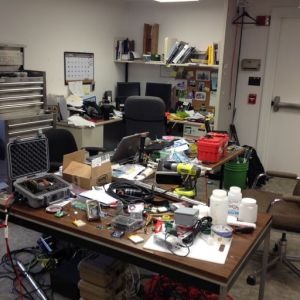 The tech space is full of controllers, sensors, cables, cases, batteries and canisters of water. It was encouraging that I was able to identify some of the parts in the bins, and Steve and I probably could have spent even more hours than we did just talking shop.
The tech space is full of controllers, sensors, cables, cases, batteries and canisters of water. It was encouraging that I was able to identify some of the parts in the bins, and Steve and I probably could have spent even more hours than we did just talking shop.
After seeing what was needed, Steve helped me to order some parts. So, now I have a datalogger and an ultrasonic rangefinder at my house. The datalogger is the main board in the circuit which will give instructions and allow for data to be collected. The ultrasonic sensor will measure the water depth throughout the day. So far this is a cost-effective set-up and there may be some room for another sensor. Right now I’m favoring conductivity, which looks at metals in the water. However, the sensor has to be able to withstand freezing temperatures, and Steve is currently testing a new one to see if it will be accurate. So, we will see which sensor wins. Steve has been testing equipment like this for years and is an expert on sensors and conditions.
One of the frustrating things about the field is that a good part may be discontinued, which leads to more testing of new products. Also, just because the paperwork says a part will operate in a certain way under certain conditions does not always mean this is true. So, the process is never-ending.
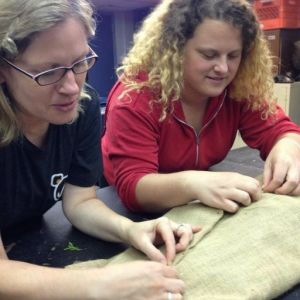 The next step in the process was to work on building a snake from burlap, and luckily I found someone interested in assisting me — Brenna Leary. Brenna recently graduated with a degree in environmental education and also has a love of plants. So, we’ve been having a lot of fun bouncing ideas back and forth. We spent an afternoon at the Center stuffing a casing of burlap with stones, wood chips, and coir. Then, we stitched the fabric shut and created the features of a tail, head and tongue with some tucks and scraps. It was a lot of fun and the resulting piece reminds me of the corn husk dolls I used to make as a child in Girl Scouts. They were featureless, but they had a beauty none-the-less, and so it is the same with the snake.
The next step in the process was to work on building a snake from burlap, and luckily I found someone interested in assisting me — Brenna Leary. Brenna recently graduated with a degree in environmental education and also has a love of plants. So, we’ve been having a lot of fun bouncing ideas back and forth. We spent an afternoon at the Center stuffing a casing of burlap with stones, wood chips, and coir. Then, we stitched the fabric shut and created the features of a tail, head and tongue with some tucks and scraps. It was a lot of fun and the resulting piece reminds me of the corn husk dolls I used to make as a child in Girl Scouts. They were featureless, but they had a beauty none-the-less, and so it is the same with the snake.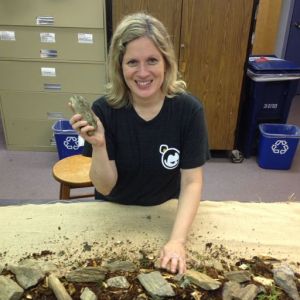
I started this post with this idea of change, and it may be apparent with electrical parts, but it is even more so with art. I first imagined my burlap StormSnakes to be painted with environmentally safe paint. However, someone reminded me that even natural things can react badly when put in touch with chemicals in stormwater run-off. So, you never know what kind of brew you are going to get running into the stream. I know there are all sorts of compromises we make daily, however, I didn’t want any risk in this, no matter how small. So, one day I was having lunch with another artist friend and we got into talking about the cool plant holders made of felt and other natural ways people deal with urban plantings. I suddenly remembered those crazy Chia Pets with the bad commercials. They were ceramic objects with a seed goop smeared onto them which would eventually sprout into odd topiaries. What an interesting idea to make snakes that had growing material on them. So, I talked to Melissa at the Center about the possibility of incorporating seeds or plugs onto my stuffed burlap snacks. She definitely had some recommendations and was excited since plants are her expertise. So, I hope to now perform a test in the greenhouse to see what emerges. Can I do stripes? Would I work with different plants and textures? I don’t know and I like that answer.
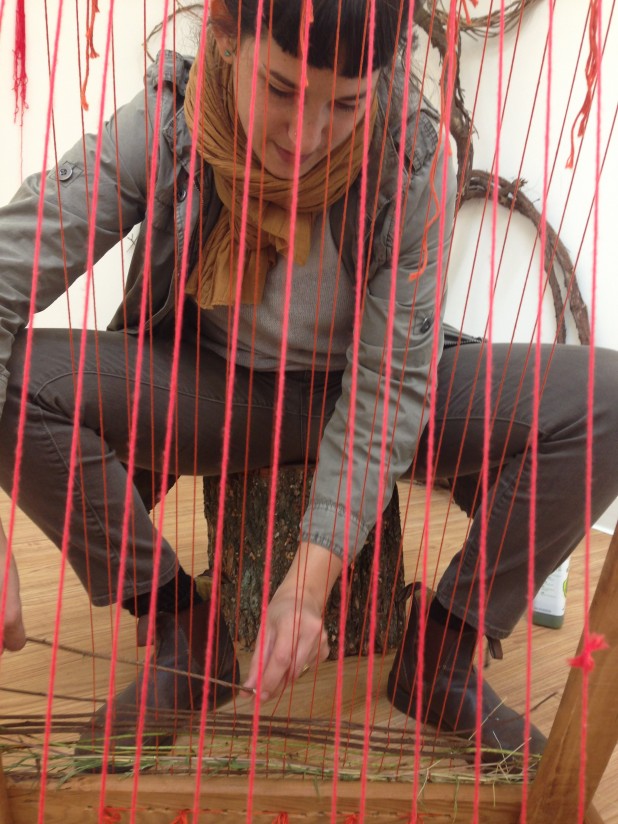
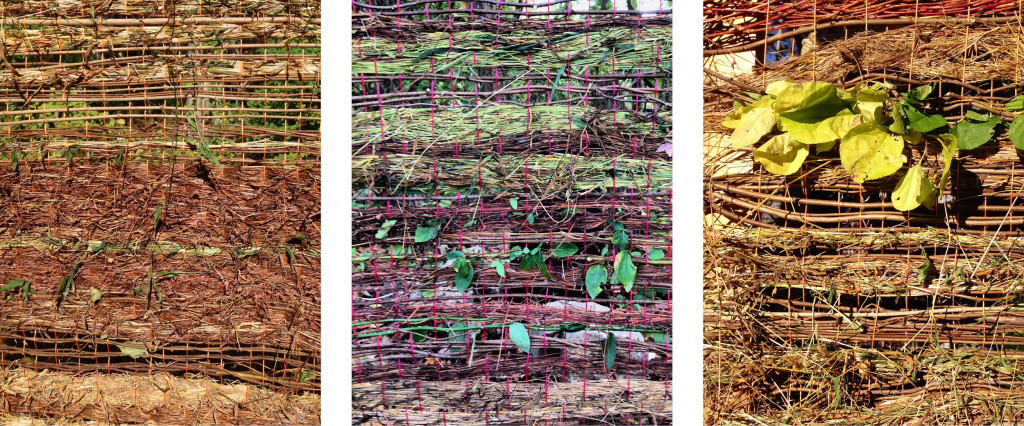 By LandLab Resident Artists Zya Levy and Kaitlin Pomerantz, WE THE WEEDS
By LandLab Resident Artists Zya Levy and Kaitlin Pomerantz, WE THE WEEDS
For our Landlab Residency project, the process of its creation is of great importance. As we work towards the installation of a large-scale sculpture created from woven plant material in Spring 2015, we invite Schuylkill Center visitors to participate right now in creating the tapestry panels which will comprise it. In this way, the exploration of global plant migration, and the ecological and cultural roles of non-native plants, becomes a hands-on, engaging experience, with a cumulative, archival result. The following photos show some moments in the process– from the building and stringing of the looms, to their on-site installation, to actual weaving. The looms will be up all fall– we hope these photos encourage you to come up and try your hand at weaving with invasive vines!
With the help of Philadelphia Woodworks we built two large, free standing, cedar tapestry looms.
For the warp, we are using colorful braided mason line. For the weft we are using invasive plants such as oriental bittersweet, mile-a-minute, Japanese honeysuckle, wisteria, Japanese stiltgrass and bush honeysuckle harvested from the Schuylkill Center.
A group volunteers help remove invasives and collect materials.
We process the material by cutting it into workable lengths and stripping off the leaves revealing the colors and textures of the plant material, the silvery-grey of the oriental bittersweet and the rusty brown of the mile-a-minute.
With the looms strung up and material collected we are ready to weave. Friends, volunteers and students pitch in!
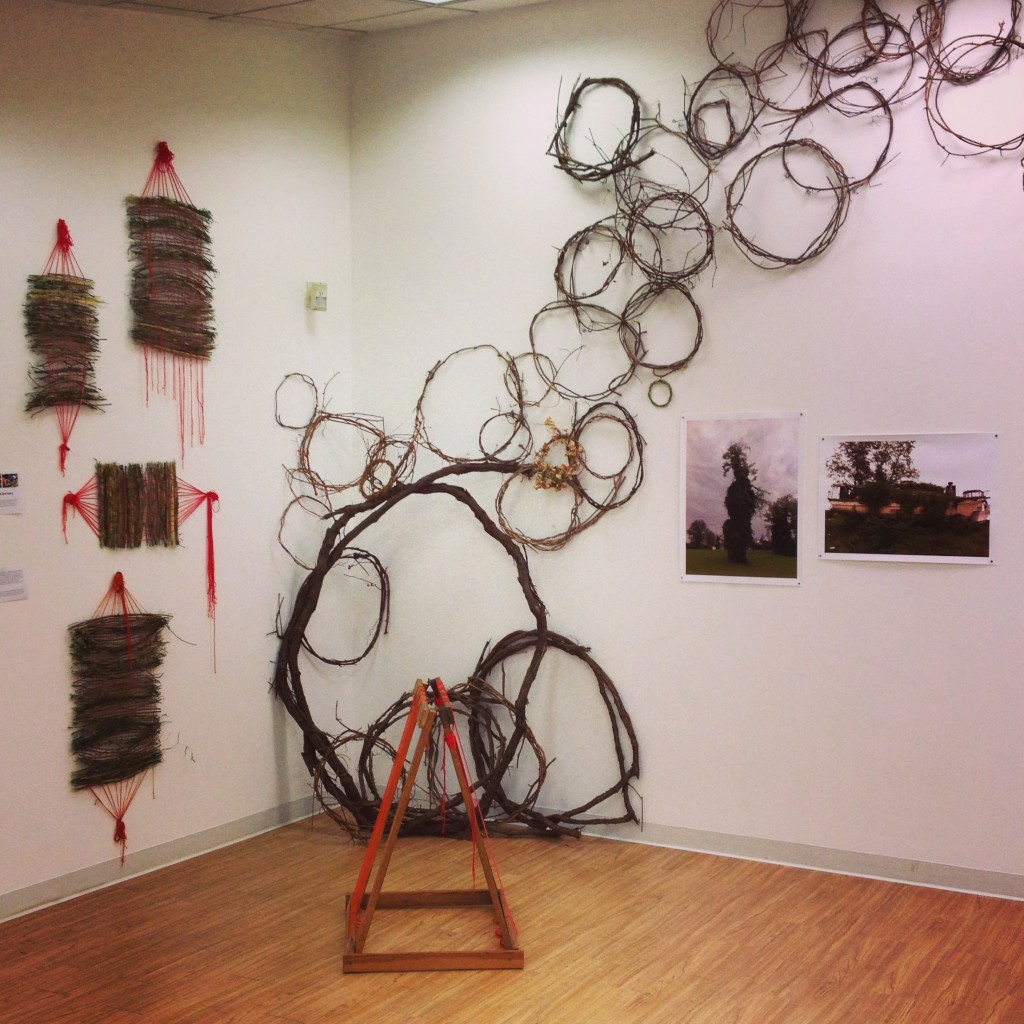 We contributed some process weavings, photos, and a vine installation to a beautiful show at the Schuylkill Center called Progress & Process, and also included an indoor loom for this show. The show is up through December 13.
We contributed some process weavings, photos, and a vine installation to a beautiful show at the Schuylkill Center called Progress & Process, and also included an indoor loom for this show. The show is up through December 13.
The outdoor looms will be installed at the Schuylkill Center through the end of November. Please come join us!
Do you think you can weave as fast as Zya?